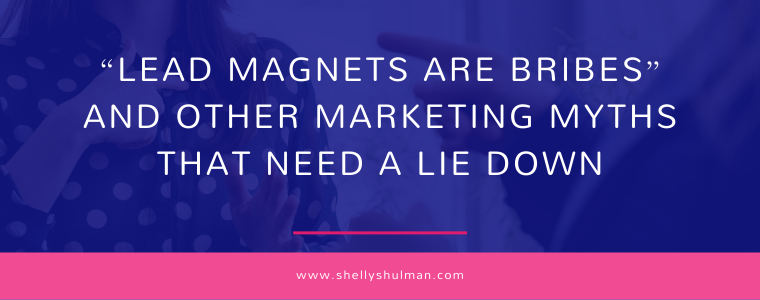Every now and then, I hear someone say they don’t agree with lead magnets. That they’re unethical. That offering a freebie in exchange for someone’s email address is basically bribery.
And honestly? That’s when I know we need to have a chat. Because that line of thinking completely misses what’s really going on here.
Let’s call a spade a spade: a lead magnet is a transaction.
Not a dodgy back-alley deal. Not trickery. Just a transaction—like every other one we make in business.
We hand something over, and we get something back.
Just like:
- You pay for a service, you get results.
- You promote someone on social media, they give you a discount or freebie.
- You write a guest blog or appear on a podcast, and you get exposure (and ideally a lovely little bump in traffic or SEO for your troubles).
The only difference? With a lead magnet, the “payment” isn’t cash or a credit card. It’s an email address.
And let’s be real: that email address is valuable. Especially these days. Our inboxes are sacred ground. Most people guard them like a dragon guards treasure. If someone’s handing over their email, it means they believe what you’re offering is worth it. That you’ve built enough trust—or curiosity—to earn a spot in their digital world.
That’s not a bribe. That’s respect.
Respect for your value. Respect for their time.
Lead magnets are simply permission-based marketing done right.
They say, “Hey, I’ve got something that can help you.” And if the other person says “Yes, I’d like that,” and gives you their email, congratulations—you’ve just made a consensual, mutually beneficial business move.
Would we call it unethical if someone downloaded a free recipe from a food blogger? Or got a free sample at a beauty counter? Or listened to a free podcast episode? Of course not.
So why is it suddenly “icky” when it involves a business owner offering a PDF, a checklist, a mini-course, or a toolkit?
The real problem isn’t lead magnets. It’s bad lead magnets.
You know the ones:
- Fluffy freebies that overpromise and underdeliver.
- Boring downloads that are basically a glorified sales pitch.
- “Ultimate guides” that are actually 3 pages of filler and a link to book a discovery call.
Now that feels a bit cheeky—and not in a good way.
But when you offer something genuinely useful? Something that helps solve a problem, gives clarity, or saves time? That’s not bribery. That’s serving your audience well—before they’ve even paid you a penny.
So if you’ve been sitting on the fence, scared that offering a freebie makes you look desperate or manipulative, let me set the record straight:
A good lead magnet doesn’t scream, “Please like me!”
It confidently says, “Here’s how I can help you.”
And if someone wants more of that magic? That’s where your emails, your offers, your voice come in.
Lead magnets don’t close sales.
They open doors.
And if someone wants to walk through and stay awhile—brilliant. That’s when the real business begins.
Want to create a lead magnet that doesn’t suck (or feel sleazy)?
Inside my Ultimate List Building Course, I walk you through how to create powerful, no-fluff lead magnets that actually grow your audience—and your business. You’ll learn what works, what doesn’t, and how to build a list full of the right people who are excited to hear from you. – Find out more here
No gimmicks. No “hacks.” Just solid strategy, the way it should be.

